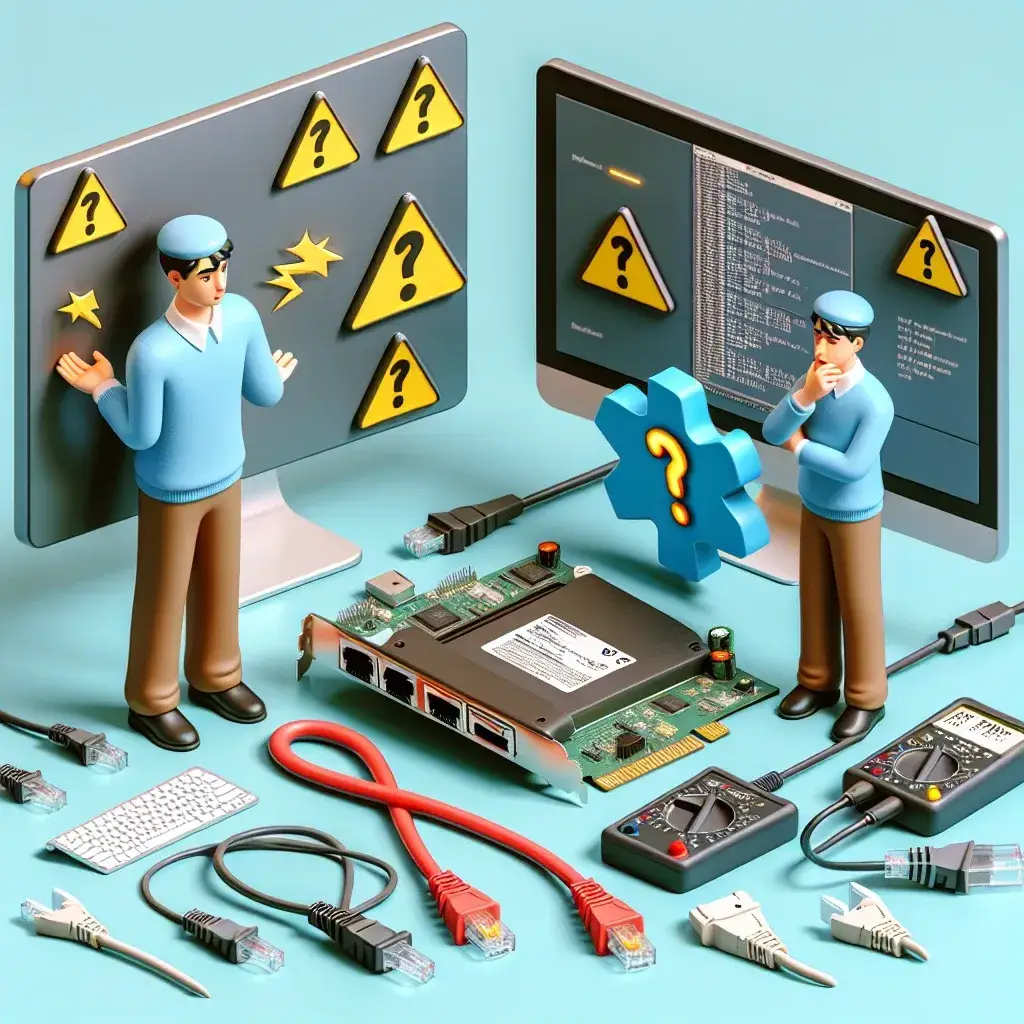How do you troubleshoot a network adapter that isn’t working?

Network issues can be incredibly frustrating, especially when they prevent you from accessing the internet or connecting to other devices on a network. Network adapters, whether wired or wireless, are critical components that manage network communication. When a network adapter isn’t working, it can disrupt your entire workflow. This guide will show you how to troubleshoot a network adapter that isn’t functioning properly.
Common Symptoms of Network Adapter Issues
Before diving into troubleshooting, it is important to identify the common symptoms that indicate a network adapter problem:
- No internet connection
- Intermittent connectivity
- Slow connection speeds
- Error messages related to network adapters
Step-by-Step Troubleshooting Guide
Step 1: Basic Checks
- Ensure the network cable is properly connected (for wired connections).
- Verify that the wireless adapter is turned on (for wireless connections).
- Restart your computer and router.
Step 2: Device Manager Inspection
Open Device Manager and check if the network adapter is listed. Follow these steps:
- Press Win + X and select Device Manager.
- Expand the Network Adapters section.
If there is a yellow exclamation mark or no network adapter listed, it indicates a problem.
Step 3: Update or Roll Back Drivers
- Right-click on the network adapter in Device Manager and select Update driver.
- Choose Search automatically for updated driver software.
- If the problem started after a recent driver update, try rolling back to the previous version by selecting Properties > Driver > Roll Back Driver.
Step 4: Network Troubleshooter
Windows has a built-in network troubleshooter that can help diagnose and fix common network issues.
- Go to Settings > Update & Security > Troubleshoot.
- Click on Internet Connections and select Run the troubleshooter.
Step 5: Network Reset
Sometimes a network reset can resolve persistent issues.
- Navigate to Settings > Network & Internet > Status.
- Scroll down and click Network reset.
- Follow the prompts to reset your network settings.
Step 6: Check for Physical Damage
Inspect the network adapter and associated cables for any visible damage. Replace damaged components if necessary.
Step 7: BIOS Settings
Ensure that the network adapter is enabled in the BIOS:
- Restart your computer and enter the BIOS/UEFI settings (usually by pressing F2, DEL, or another key during startup).
- Navigate to the network or integrated peripherals section.
- Make sure the network adapter is enabled.
Step 8: Malware and Antivirus Check
Run a comprehensive malware scan to ensure your system is not compromised by malicious software that could affect network connectivity.
Step 9: Reinstall Network Adapter
If the problem persists, try reinstalling the network adapter:
- Right-click on the network adapter in Device Manager and select Uninstall device.
- Restart your computer. Windows will attempt to reinstall the network adapter automatically.
Step 10: External Network Adapter
If all else fails, consider using an external USB network adapter as a temporary solution.
Common Network Adapter Problems and Solutions
| Issue | Solution |
|---|---|
| Network adapter not detected | Check BIOS settings, reinstall driver |
| Intermittent connectivity | Update driver, check for interference (wireless) |
| Slow speeds | Verify connection speed, update firmware |
| Frequent disconnections | Disable power-saving mode, check hardware |
| Error code 10 | Update driver, replace adapter if faulty |
Conclusion
By following the steps outlined in this guide, you should be able to effectively troubleshoot and resolve most network adapter issues. Ensuring that your network adapter is functioning properly is crucial for maintaining a stable and fast internet connection. If you continue to experience problems despite following these steps, it may be time to consult a professional or replace the network adapter.
